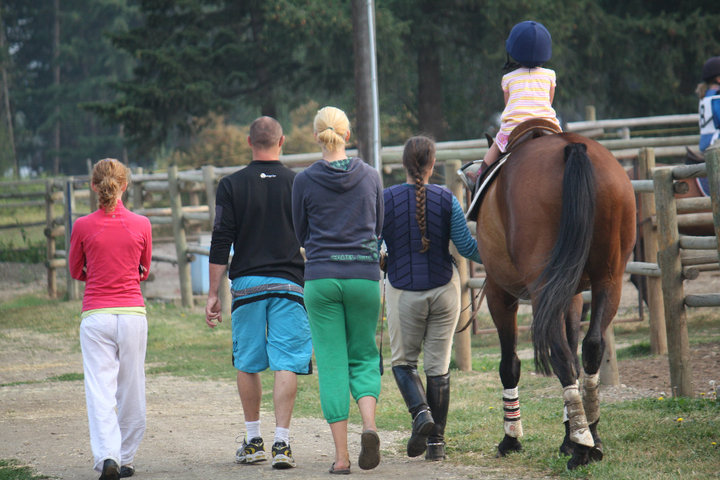Equestrian Helmet Fact Sheet
1. Over 33,000 people in BC ride horses. Athletes involved in horse riding are
more likely to suffer head trauma than those involved in football, boxing or
soccer.
2. Head injuries are the most common reason for admission to hospital or even
death among riders. Most injuries occur during pleasure riding.
3. A fall from 2 feet (60 cm) can cause permanent brain damage. A horse
elevates a rider 8 feet (3 meters) or more above ground.
4. A human skull can be shattered by an impact of 7-10 kph. Horses can gallop
at 65 kph. Children s skulls are the most vulnerable.
5. Ten to fourteen year olds are the children most likely to be involved in an
accident with a horse, however all ages are at risk.
6. A rider who has had one head injury has a 40% chance of suffering a second
head injury. Children, teens and young adults are most vulnerable to sudden
death from a second impact syndrome; severe brain swelling as a result of
suffering a second head injury before recovery from the first head injuries.
7. Death is not the only serious outcome of unprotected head injuries. Those
who survive with brain injury may suffer epilepsy, intellectual and memory
impairment, and personality changes.
8. Hospital costs for an acute head injury can be in the range of $2000 per day.
Lifetime extended care costs may easily exceed $3 million. There is no
funding for rehabilitation outside the medical setting.
9. Helmets work. Most deaths from head injury can be prevented by wearing
ASTM (American Society for Testing Materials), SEI (Safety Equipment
Institute) approved helmets that fit correctly and have the chin strap firmly
applied. Other types of helmets including bike helmets, are inadequate.
10.Racing organizations require helmets and as a result jockey now suffer less
head injuries than pleasure riders. The US Pony Club lowered their head
injury rate 29% with mandatory helmet use. Britain s hospital admission rate
for equestrians fell 46% after helmet design improved and they became
routine in use.
11.The BCMA (BC Medical Association), CMA (Canadian Medical Association),
AMEA (American Medical Equestrian Association) and the AMA (American
Medical Association) recommend approved helmets be worn on all rides by
all equestrians.
I have been given permission to reprint this information. This information is from the Horse Council BC Website under brochures.
